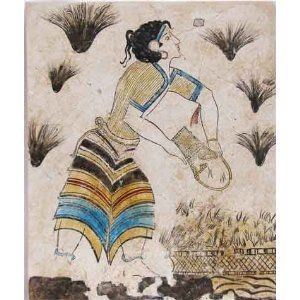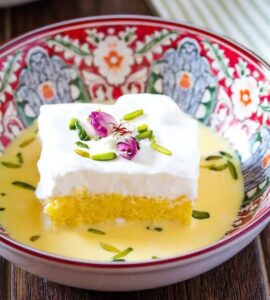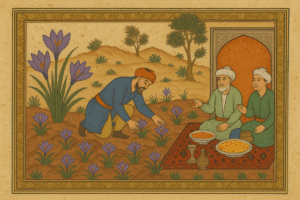For thousands of years, saffron has been treasured not just as a culinary jewel, but as a potent natural remedy for the body and mind. Across ancient civilizations—from the palaces of Persia to the healing centers of Greece and the apothecaries of the Islamic Golden Age—saffron, or crocus, held a place of deep medicinal reverence.
Today, as we witness a global revival of plant-based wellness, saffron’s timeless therapeutic power is finding its way back into the spotlight.
Womb Wisdom: Saffron’s Deep Connection to Women’s Health
One of the most fascinating insights from ancient medical literature is saffron’s central role in gynecology. In the earliest Greek medical texts attributed to Hippocrates (5th–4th century BCE), out of twenty mentions of saffron, fourteen focus on female reproductive health. It was prescribed for conditions of the womb, to promote fertility, ease menstruation, and—controversially—to provoke abortion.
This strong association between saffron and the feminine body may even be reflected in the famous Bronze Age frescoes of Thera (modern-day Santorini), which depict women harvesting crocus flowers—perhaps not just as art, but as a visual reference to their sacred, medicinal role.
A Spectrum of Traditional Benefits
As saffron traveled through time and cultures, its healing applications expanded. Here’s how ancient healers viewed its powers:
Digestive, Emollient & Astringent (Dioscorides, 1st century CE)
The renowned Greek physician Dioscorides classified saffron as warming and slightly astringent, helpful in tonics for digestion and skin health. He also noted its ability to prevent drunkenness—a curious use that hints at its stabilizing effects on the nervous system.
Soothing & Strengthening (Galen, 2nd–3rd century CE)
Galen took a more theoretical approach, emphasizing saffron’s warming, drying, and mildly astringent nature. These qualities made it ideal for wound-healing ointments, and to regulate internal imbalances—especially in the digestive and reproductive systems.
Multi-System Medicine (Razi & Avicenna, 9th–11th centuries CE)
As Greek medicine influenced Islamic scholars, saffron’s reach widened. In the 10th century, Avicenna (ibn Sina) expanded upon Razi’s records, describing saffron as:
- Cardio-tonic and exhilarant (uplifting to the heart and mind)
- Anti-inflammatory, sedative, and mildly anesthetic
- A support for respiratory function, digestion, liver detoxification, and urinary health
- Helpful for eye conditions, including inflammation and impaired night vision (hemeralopia)
He even referenced saffron’s use in bacterial infections, noting its ability to “reverse putrefaction”—a striking observation in the era before germ theory.
Beauty, Mood, and the Subtle Body
Saffron’s benefits weren’t purely physical. Many traditions valued it for its ability to elevate mood, enhance complexion, and calm the spirit. As noted by Dioscorides and later echoed by Avicenna, saffron’s “exhilarant” quality made it a prized remedy for low mood and emotional fatigue. Today, modern clinical studies are investigating saffron’s efficacy in supporting mental health—particularly depression and anxiety.
A Note on Toxicity: Misidentification vs. Moderation
Interestingly, historical texts also warned of saffron’s toxicity—though this was likely due to confusion with Meadow Saffron (Colchicum autumnale), a visually similar but poisonous plant. True saffron (Crocus sativus), when consumed in moderation, is remarkably safe and gentle—though its potency means a little goes a long way.
A Golden Revival
By the 19th century, saffron had largely faded from Western therapeutic use. But in recent years, it has re-emerged as a hero ingredient in functional wellness. The demand is growing globally—evidenced by China’s interest in Greek saffron fields and Kozani’s Protected Designation of Origin (PDO) status.
At Zarafron, we honor this extraordinary legacy. Each golden thread carries millennia of wisdom, from ancient womb medicine to modern mood support. Our mission is to reintroduce saffron into daily rituals—not as a relic of the past, but as a radiant ally for balance, beauty, and well-being.
Glow from within, naturally.™
Disclaimer
This information is intended for educational purposes only and is not a substitute for professional medical advice, diagnosis, or treatment. These statements have not been evaluated by the Food and Drug Administration. Zarafron products are not intended to diagnose, treat, cure, or prevent any disease. The historical uses of saffron referenced in this article are presented for educational purposes only. Please consult your healthcare provider before using saffron or any supplement, especially if you are pregnant, nursing, taking medications, or have a medical condition.
Sources
- Touwaide, A., & Appetiti, E. (n.d.). Herbs in History: Saffron. American Herbal Products Association. Retrieved May 3, 2025, from https://www.ahpa.org/herbs_in_history_saffron




